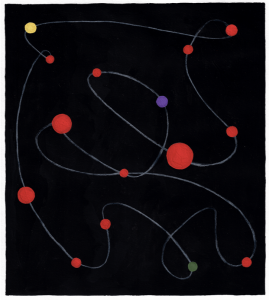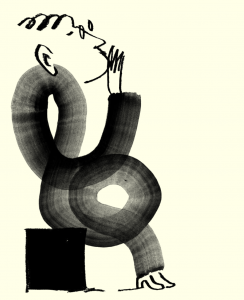David J Constable cuts a path through the Patagonian mountains as he retraces the steps of legendary journalist Bruce Chatwin
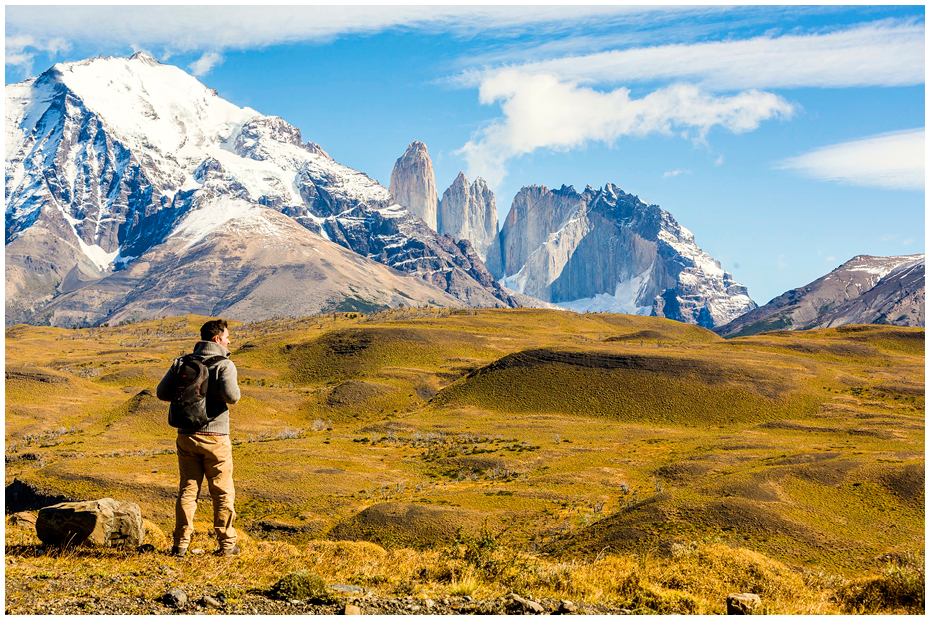
To wander alone in Patagonia, across plains of thorny scrub and through small villages of sheep farmers and grumpy gauchos, is to follow in the footsteps of the fervid writers before me. Those who, bored of the conventional, hot-footed to the “uttermost part of the earth” to disconnect from the shallow artificiality of modern existence.
Bruce Chatwin travelled to South America and Patagonia in 1975, inspired by a piece of brontosaurus skin he’d seen as a child in his grandmother’s cabinet (in fact, it was a cut from a mylodon, or giant sloth). He wrote of Patagonia, “It is the farthest place to which man walked from his place of origins. It is therefore a symbol of his restlessness.”
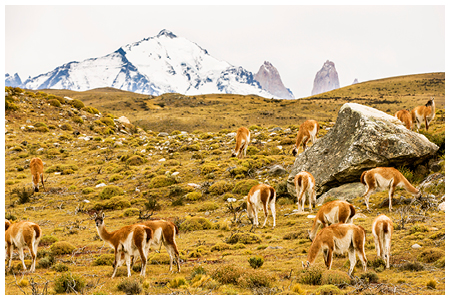
As a journalist, Chatwin saw a story; as a writer he saw a tale to tell; and as a traveller he saw adventure, taking him across miles of country and noting his bizarre interactions with its characters along the way.
Covering the lower third of Chile and Argentina, Patagonia is a land at the foot of the Earth, the hanging udder above all South America. It is a place of brown stubble fields and wild scrubland, and even though I’ve now visited, much of it remains a mystery.
From Santiago, Latin America adventure specialists Journey Latin America, arranged a route to travel to Punta Arenas. From there I drove five hours south, along a rolled-out stretch of hot tarmac that went on as far as the eye can see, what Chatwin described as “beginning and ending in a grey mirage… straight, dusty and trafficless.” Patches of farmland were barren and wind-flattened, and every so often I’d pass a small, wooden bus shelter occupied by a rucksack-heavy student.
I passed through the port city of Puerto Natales on the shores of Senoret Channel. The Residencial Ritz Hotel where Chatwin stayed has gone, now just a derelict block on the banks of the dock. And there’s a statue mylodon, where in 1896 the bones and skin of this great 10,000-year-old beast were discovered.
The small city was swollen with boot-heavy foreign walkers, filling the region with their rucksacks and poles. From here they dispersed like fireworks in all directions, walking to the Torres del Paine or Bernardo O’Higgins National Parks, or taking the Navimag ferry to Puerto Montt in the Los Lagos region of Chile.
Further south, the sound of the vehicle’s engine caused strange beasts to raise their heads and pitch-up their ears. The tawny necks of guanacos bent delicately and curved towards the grass; bouncing hares moved with infinite energy and above, circling condors spotted a dying animal or the leftovers from a puma’s dinner, likely the bloodied carcass of a guanaco or small horse.
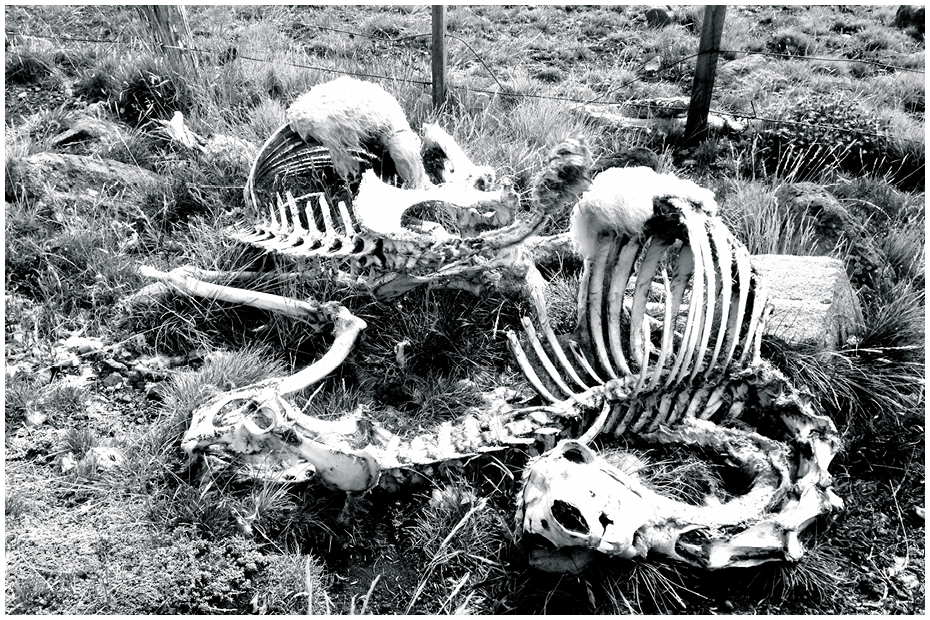
It was impossible not to notice the wind this far south. It’s the main protagonist in everyone’s life, dictating the moods of locals and animals. Along with the ice, it’s responsible for the blasted scenery, carrying away water from plants and flowers and dehydrating vegetation. Victorian explorer Lady Florence Dixie used “bracing” to describe the weather’s volatility, when accounting her journey through Patagonia between 1878–79.
When the snow melts in spring, the full expanse of the land reveals itself as a burnt-orange and yellow patchwork of bleached meadow. New growth pokes forth among the matted grass and game are more plentiful: ostriches bound across the flat acreage and guanacos – far outnumbering the human population – wander through the valleys. Within the boundaries of the national park they lack the curiosity of the wilder breads and pay no attention to vehicles and NIKON-pointing tourists. Some grow so bold and curious as to get close to a vehicle, then appear to shrug, turn heel and slump back to a grassy lunch.
“An expansive-stretch of landscape glass provides a working wallpaper of seasonal change, facing the Paine Massif and Las Torres Mountain, and out across a turquoise lake the colour of mint Listerine”
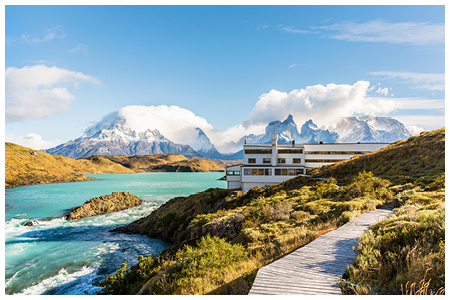
In the Torres del Paine, the Andes rolled along the backdrop and lowland pampas and cut into the blue sky. The whole Cuernos del Paine range shimmered in blazing white, its perfect mirror-image reflected in Lake Pehoe, where a flock of chewing-gum pink flamingos stood in the sun. Three granite monoliths, nicknamed “Cleopatra’s Needles” by Florence Dixie, shot skywards from the steppe some 8000 feet.
Hiking to Glacier Grey with guides from explora, the weather began as a fresh morning breeze, but as we moved closer to the glacier wall, the Arctic chill was evident, whipping off the water and mixing with the rain. It reached 85 mph and thumped hard, pelting the rain like diamond daggers: cold, sharp and excruciating against my exposed cheeks. Back at the lodge at dinner, it rattled the windows and growled like wolves in the distance.
The explora lodge titters on the edge of the Salto Chico waterfall and is spoilt by the infinite surrounding beauty. I’d find it hard to believe there’s another hotel in the world that could rival such views. An expansive-stretch of landscape glass provides a working wallpaper of seasonal change, facing the Paine Massif and Las Torres Mountain, and out across a turquoise lake the colour of mint Listerine.
With an international group of intrepid explora guests, I attended a lunchtime barbecue (quincho) with local gauchos. A whole lamb was roasted and flayed, spatchcocked on a wooden cross. The meaty aroma was engulfing. Clumps of juicy meat were carved from the blackened beast and shared among guests, washed down by cans of Coke and Chilean Cabernet Sauvignon.
I hiked in the north-east, through the Baguales plaines on the Chile-Argentina border. A sprawling no man’s land without roads. It consists of mainly trout streams and fossilised plants. A makeshift museum had been designed in the form of a stone circle, and the fossilised imprints of leaves on rocks added to its centre by who knows who?
That afternoon I walked for over six hours along the foot of the Earth without seeing a soul.
Special thanks to the following: KLM, who fly daily from Heathrow to Santiago via Amsterdam; LAN fly from Santiago to Punta Arenas. From here, explora collect guests from the airport and transfer to Torres del Paine. All ground bookings and flight connections were arranged by Journey Latin America

